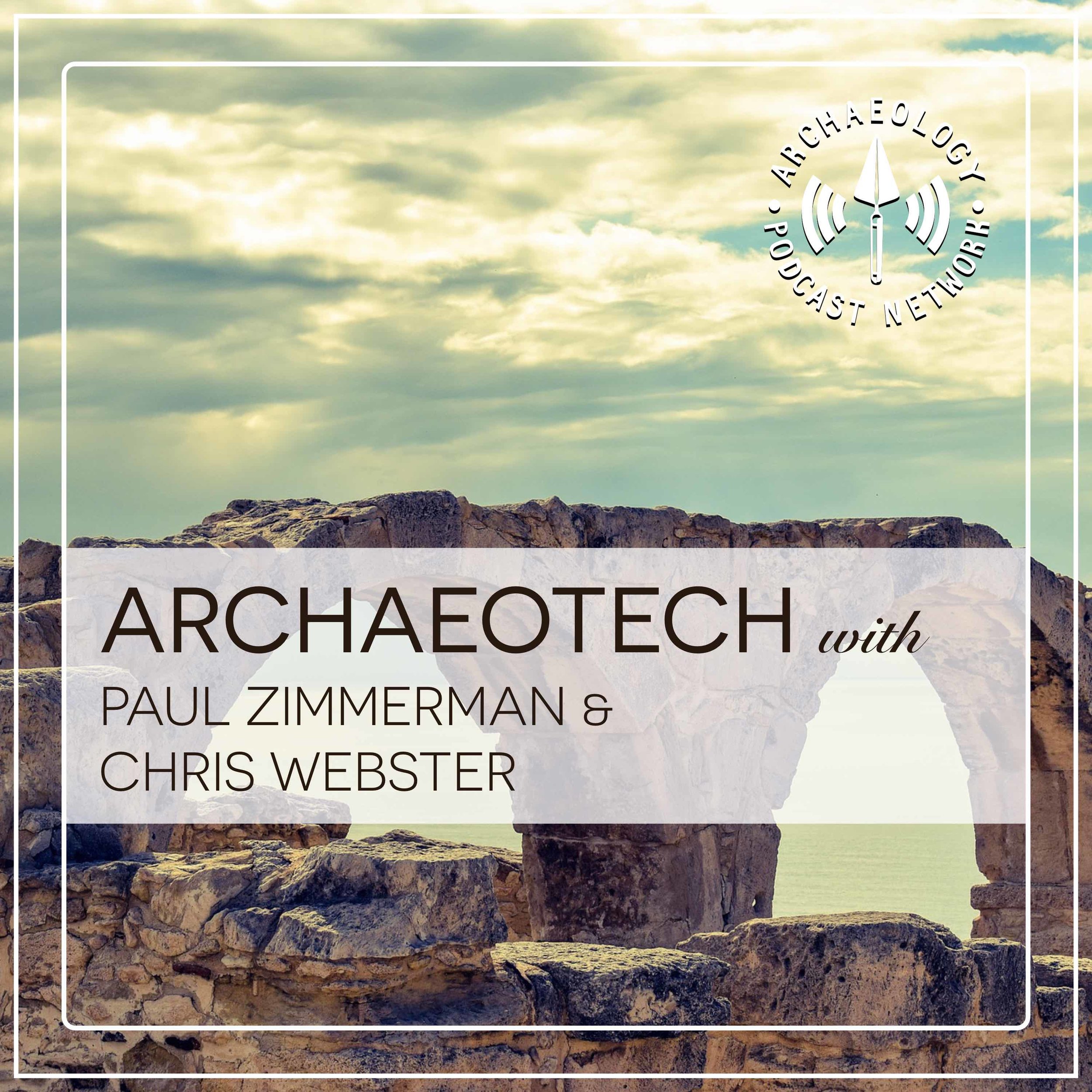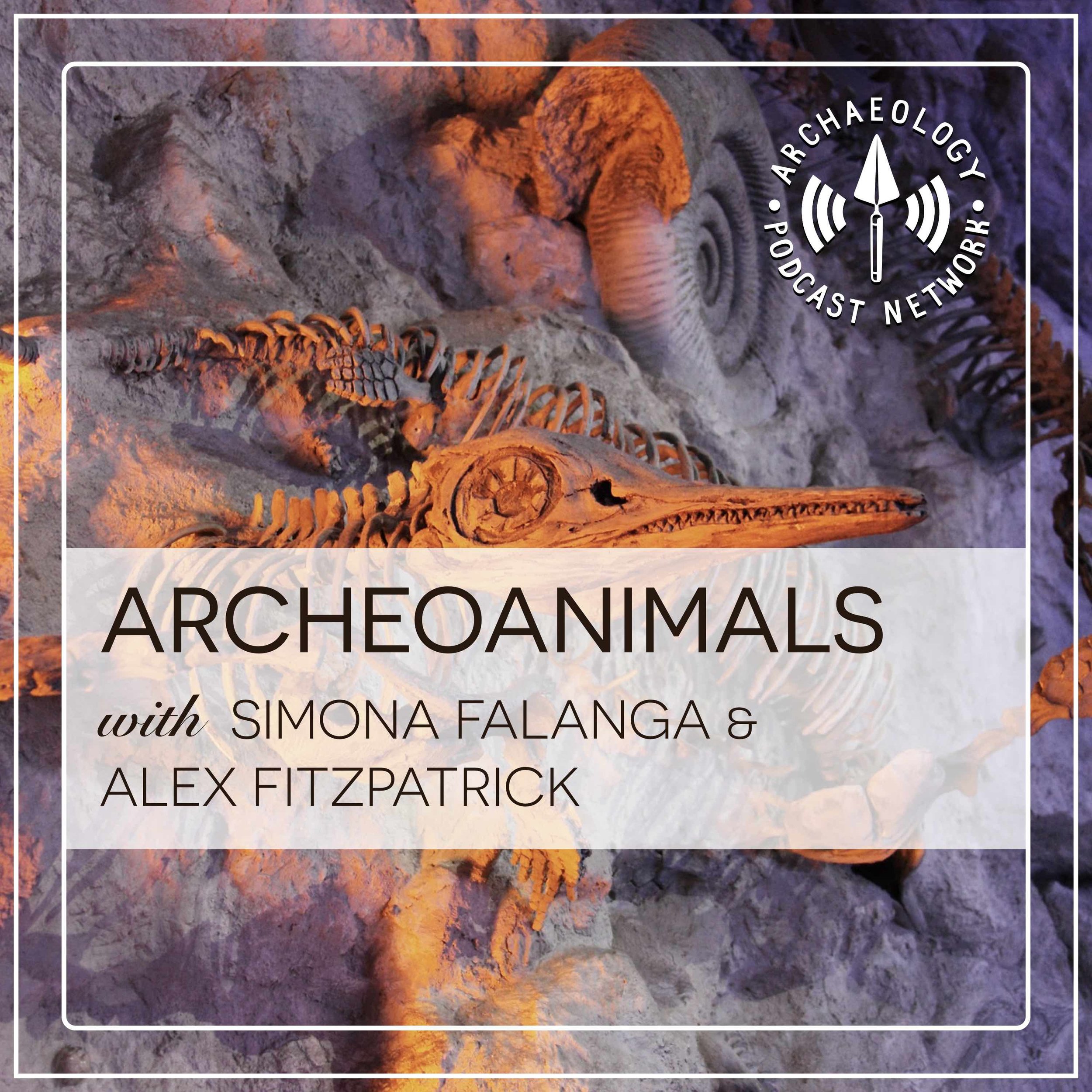Chris and Richie get together on Facebook Live, Youtube, and Twitch to create another masterpiece of nothing! That TV show from the 90’s really did have a plot but this truly is a show about nothing. Join us and laugh.
Links
Contact
Chris Webster

Chris and Richie get together on Facebook Live, Youtube, and Twitch to create another masterpiece of nothing! That TV show from the 90’s really did have a plot but this truly is a show about nothing. Join us and laugh.
Chris Webster

We've talked tiny plants, but this week we're going EVEN SMALLER. Anna and Amber chat with Dr. Kristen Wroth, who studies plant micro-remains like phytoliths to learn about ancient human behavior. We talk about favorite plants, field stories, and more!
Phytoliths: What They Are and What They Tell Us (Environmentalscience.org)
Phytoliths: A Comprehensive Guide for Archaeologists and Paleoecologists (via WorldCat)

Today we have a free-ranging discussion prompted by the article "Using Multistaged Magnetic Survey and Excavation to Assess Community Settlement Organization: A Case Study from the Central Peninsular Gulf Coast of Florida" by Christina Perry Sampson and Timothy J. Horsley, from the February 2020 issue of Advances in Archaeological Practice.
Chris Webster
Twitter: @archeowebby
Paul Zimmerman
Twitter: @lugal
Email: paul@lugal.com

We took paragraphs from two very out-of-date archaeology papers and took out lots of key words. Then, listeners sent in their own word lists, with which we filled in those paragraphs! The results were very silly, and we had a lot of fun!
Stay tuned for upcoming live events, and come hang out with us on our stream!

Like most of you, we've been staying at home for the past several weeks, so we thought--what better way to distract our listeners from THEIR households than a look at OTHER people's households! Anna and Amber talk about how archaeologists' concept of "house" and "home" and "living space" has shifted over the years, and take a look at some ancient examples of home life.
The Archaeology of Household: An Introduction (via ResearchGate)
Archaeological houses, households, housework and the home (via ResearchGate)
Syllabus - ARCH 2320 Household Archaeology in the Ancient Near East and Beyond
Household Studies in Complex Societies (Oriental Institute Seminars)

Dr. D. Shane Miller is not your average southern boy. Rather, he is one of the more accomplished archaeologists in the country for his age, and currently is an Assistant Professor in the Department of Anthropology and Middled Eastern Cultures at Mississippi State University.
Shane started his career at the University of Tennessee where he got his undergraduate and his master’s degree conducting his thesis at the Topper Site.
He later completed his PhD at the University of Arizona, and unfortunately, helped direct a field school in Nashville, Tennessee in which David was a young student. There is always a Sith and his master.
We talk about Shane‘s career, some fun field stories, and have an interesting discussion about the field of anthropology in general. It was a blast.
Dr. Shane Miller
Twitter: @TheDurtyTowel
Facebook: https://www.facebook.com/profile.php?id=100005146334910
Instagram: @alifeinruinspodcast
Facebook: @alifeinruinspodcast
Twitter: @alifeinruinspod

For this episode, host Doug Rocks-Macqueen proposed a hypothetical scenario:
It is 2030, a cataclysmic event has destroy most of the country and now we are rebuilding our society. As one of the few remaining archaeologists the new government has tasked you with rebuilding CRM – new laws, new methods, anything goes, how would you do?
We all do our best to understand and interpret this scenario.
Bill @succinctbill; Doug @openaccessarch; Stephen @processarch; Bill A. @archaeothoughts; Chris W @Archeowebby, @DIGTECHLLC, and @ArchPodNet
Bill White: Succinct Research
Doug Rocks-MacQueen: Doug’s Archaeology
Stephen Wagner: Process - Opinions on Doing Archaeology
Chris Webster: Random Acts of Science

In this episode, Simona and Alex tackle palaeopathology. Listen on for how to identify signs of injury and disease in archaeological skeletal remains and what these can tell us about human-animal interactions in the past. Also Roman Pugs.
Bartosiewicz, L. and Gal, E. (2013) "Shuffling Nags and Lame Ducks: The Archaeology of Animal Disease". Oxbow Books.
Gaastra, J.S., Greenfield, H.J., and Linden, M.V. (2018) "Gaining Traction on Cattle Exploitation: Zooarchaeological Evidence from the Neolithic Western Balkans". Antiquity.
MacKinnon, M. (2010) "'Sick as a Dog': Zooarchaeological Evidence for Pet Dog Health and Welfare in the Roman World". World Archaeology. pp. 290-309.
Alex Fitzpatrick: Twitter: @archaeologyfitz
Simona Falanga: Twitter: @CrazyBoneLady
Alex’s Blog: Animal Archaeology
Music "Coconut - (dyalla remix)" https://www.youtube.com/watch?v=_2UiKoouqaY

Cue the tense cinematic score. We’re talking about art crimes, both solved and unsolved! Heists, forgeries, and criminal masterminds abound, as we discuss the “value” of art, and why the black market for art and antiquities continues to thrive.
8 of the Most Notorious Art Forgeries in History (Mental Floss)
Museum's Collection Of Purported Dead Sea Scroll Fragments Are Fakes, Experts Say (NPR)
All of the Museum of the Bible’s Dead Sea Scrolls Are Fake, Report Finds (Smithsonian)
Family of forgers fooled art world with array of finely crafted fakes (The Independent)
The Global Fight Against Black Market Antiquities Intensifies (The Medialine)
Networks can stop the black-market antiquities trade (ShareAmerica.gov)
Illegal trade in antiquities: a scourge that has gone on for millennia too long (The Conversation)

Welcome to another replay of You Call This Archaeology, this time with a special guest. Stuart Rathbone joins us to talk about his research on the Donner Pass Route between Reno, Nevada and Sacramento, California.
Chris Webster

The phrase, “archaeologists aren’t taught to do that” is prevalent in archaeology. What are archaeologist’s taught? Well, this paper attempts to use alternative methods and crowdsourcing to analyze LIDAR data and overcome some of the shortfalls of academic education.
2020 Marion Forest, et. al., “Testing Web Mapping and Active Learning to Approach Lidar Data”. Advances in Archaeological Practice 8(1), 2020, pp 25-39:
Webby: Microsoft Soundscape
Chris Webster
Twitter: @archeowebby
Paul Zimmerman
Twitter: @lugal
Email: paul@lugal.com

This week, Anna and Amber talk about those pesky Big Questions: How are we here? Why are we here? Where do dragons come from? Turns out, people have been coming up with explanations, myths, and stories for questions like this since prehistory.
Dragons: A Brief History of the Mythical, Fire-Breathing Beasts (LiveScience)
Cyclops Myth Spurred by 'One-Eyed' Fossils? (National Geographic)
Menstruation (Transactions and Proceedings of the Royal Society of New Zealand 1868-1961)
Star Gods of the Maya: Astronomy in Art, Folklore, and Calendars (via Google Books)
Iconography of the Indus Unicorn: Origins and Legacy (Harappa.com)
Now we know the reason for the narwhal's tusk (Mother Nature Network)

Description: Our guest on this episode of Our Ruined Lives is Stefan Milo, the creator and producer of the popular YouTube Channel of the same name. We have a conversation about the limits of experimental archaeology, producing YouTube content and why the heck he uses a spoon as a microphone holder.
Stefan Milo Email: hello@stefanmilo.com
Stefan Milo Instagram: @historysmilo
Stefan Milo Youtube: https://www.youtube.com/stefanmilo
Stefan Milo Website: https://www.stefanmilo.com/
Stefan Milo Twitter: @Historysmilo
Instagram: @alifeinruinspodcast
Facebook: @alifeinruinspodcast
Twitter: @alifeinruinspod

Welcome to another presentation of the Facebook Live recording of The Archaeology Show called “You Call This Archaeology”. Chris Webster is joined by Richie Cruz and we talk about all things archaeology and NOT archaeology. Enjoy this random, rambling, episode :)
Chris Webster

We recorded this episode on Chris' birthday and for his birthday his wife got him the new Bose Frames Alto audio sunglasses. That sparked off a conversation about headphone and speaker policies on excavations and during survey. We also have Doug tell us how archaeology and archaeologists are fairing in the UK during the Coronavirus lock-down and social distancing.
Bill @succinctbill; Doug @openaccessarch; Stephen @processarch; Bill A. @archaeothoughts; Chris W @Archeowebby, @DIGTECHLLC, and @ArchPodNet
Bill White: Succinct Research
Doug Rocks-MacQueen: Doug’s Archaeology
Stephen Wagner: Process - Opinions on Doing Archaeology
Chris Webster: Random Acts of Science

Anna and Amber venture beneath the waves this week to bring you an episode about shipwrecks and underwater archaeology! We visit a few of the most famous ships in Davy Jones' Locker, Amber learns that underwater archaeology means more than "just pick it up from the bottom," and Anna dusts off that pirate accent.
More Than Just Archaeology Underwater (Advisory Council on Underwater Archaeology)
Uluburun Late Bronze Age Shipwreck Excavation (Institute of Nautical Archaeology)
Antikythera Shipwreck (Woods Hole Oceanographic Institution)
Ancient Skeleton Discovered on Antikythera Shipwreck (Woods Hole Oceanographic Institution)
Antikythera Shipwreck Yields New Cache of Treasures, Hints More May Be Buried at Site (Smithsonian)
The Mary Rose: The Excavation and Raising of Henry VIII's Flagship
Conservation of Cultural Materials from Underwater Sites (Archives and Museum Informatics)

This is a mostly un-edited recording of the You Call This Archaeology Show featuring Richie Cruz and Chris Webster. We recorded it on April 12, 2020. If you’d like to be notifed of future recordings head over to the FB page and like it!
Chris Webster

Today we talk to Dr. Matthew Harpster about his recent collaborative paper in the Journal of Archaeological Science about modeling concentrations of maritime activity in the past using the submerged archaeological record.
Here is the article abstract:
With a goal of understanding and visualizing the shifting concentrations of movement across the Mediterranean Sea on a centennial basis, the MISAMS (Modeling Inhabited Spaces of the Ancient Mediterranean Sea) Project developed a new GIS-based interpretive methodology that collates and superimposes a series of polygons to model densities of maritime activity in the Mediterranean Sea from the 7th century BC to the 7th century AD. After discussing the project's use of place, space, and maritime landscapes as a theoretical background, this paper explains this new methodology then demonstrates and tests results representing activity in the 1st-century BC western-Mediterranean basin. These results, apparently manifesting distinct socially-constructed places, suggest that this new approach creates new opportunities to understand the movement of people and goods across the Mediterranean in the past, and the varying uses and perceptions of maritime space in antiquity. As this method requires a dense and well-studied corpora of archaeological data, it is theoretically applicable to other maritime regions that have (or will have) the appropriate dataset, and may represent a new research agenda in maritime archaeology.
Article DOI: https://doi.org/10.1016/j.jas.2019.104997
Dr. Harpster on Academia: https://ku.academia.edu/MatthewHarpster
Research Center Website: https://kudar.ku.edu.tr/research-amd/
Chris Webster
Twitter: @archeowebby
Paul Zimmerman
Twitter: @lugal
Email: paul@lugal.com

The grass is always greener on the other side (of the Holocene). What is today a vast and inhospitable home to many people and creatures was, between ten and five thousand years ago, a lush environment replete with lakes, forests, and grasses. We examine the first clues that suggested a Green Sahara to researchers, explore the technologies and societies that lived there, and contemplate what the Sahara’s past might suggest about its future.
Africa’s oldest boat set for exhibit in Nigeria (Africa Times)
First dairying in green Saharan Africa in the fifth millennium BC (Nature)
Climate Change in North Africa: The Past is Not the Future (Climatic Change)

In this episode, our cohosts chat with Devin Pettigrew about his research on prehistoric lithic technologies. Carlton nearly throws-up from having flashbacks of butchering a goat with Devin that had been sitting out for days in an unventilated trash bag.
Devin Pettigrew
Email: devin.pettigrew@colorado.edu
Website: http://basketmakeratlatl.com/
Instagram: @ar.atlatl
Instagram: @alifeinruinspodcast
Facebook: @alifeinruinspodcast
Twitter: @alifeinruinspod